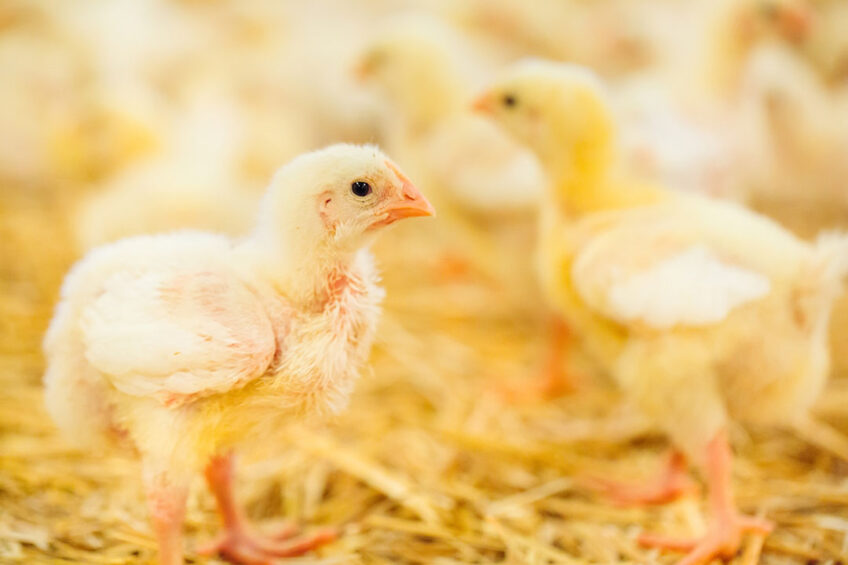Getting trace mineral levels right in poultry

Different production goals and challenges in poultry require a different approach to management and diet formulation. This means that general – and often outdated – trace mineral guidelines urgently need updating, as there is much to be gained here, says Zinpro’s Dr Leonardo Linares.

The poultry industry has changed considerably over the last 10 years, and at a greater pace than in the decades before. Animals have become more feed efficient and reach their market weight sooner as a result of advances in genetics and feed efficiency. At the same time, we see an increase in the diversification and specialisation of farms, such as antibiotic or Salmonella-free production, in times of higher production costs and changing consumer and environmental demands.
Using science to re-evaluate
“Because we see rapid and major changes in the global poultry industry, it is important to consider the different production goals and work with the latest research data on nutrient requirements for the poultry species farmed and genetics used,” says Dr Leonardo Linares, head of the research and nutritional services team at Zinpro.
He adds: “Although genetic companies do work on nutrient recommendations for these fast-growing birds, they mainly focus on protein and energy needs. For minerals (and vitamins), we see that they still resort to old recommendations, such as the NRC reference in the US, dating back to the 1990s. So imagine the potential in savings and production optimisation we can reach if we can update trace mineral recommendations for different poultry species and different production goals.”
Linares understands that genetic companies cannot update all the requirements for micronutrients: “It is not their main activity and they don’t have the time and resources to investigate that. And that’s logical. But at our company we do have the knowledge and long-standing experience on trace minerals, backed by hundreds of scientific studies done in different animal species and various regions of the world. And this has resulted in the development of the Zinpro global poultry mineral guide: an interactive document providing trace mineral recommendations to help poultry operations be more precise in trace mineral supplementation and addressing different challenges.”
Birds have become more mineral efficient
The more than 80 scientific studies and validation trials that Linares has done in different poultry species form the backbone of its updated global poultry mineral guidelines. “Over the years, birds have become more feed efficient. They eat less feed for each kilogramme they produce and can already reach their 2.5 kg market weight at day 35 (instead of day 37 in the past). So it may sound logical to think that we have to increase the dosage of trace minerals per kg of feed to still meet the mineral requirements of the animal. Interestingly, this is not the case.”
He continues: “From our research data we see that being more feed-efficient also comes with greater efficiency in trace mineral uptake and retention. So the money saved on being more feed-efficient is lost if we still maintain the same – or higher – levels of trace minerals in the diet. And this is where our science comes in on mineral uptake and retention in different poultry species. The information gained from our validation studies shows what the modern bird really needs, which helps us to be more precise and accurate in our formulation – and avoid overfeeding trace minerals.”
With the focus on more precision feeding of trace minerals, the quality and the source of the minerals is becoming more important and can make a real difference, he notes. “This is because the high growth rates and factors such as heat stress also put more pressure on gut health and metabolism than before, which could hinder the efficient uptake of macro and micro nutrients. If we have more bio-available and metabolisable forms of trace minerals we can make sure the small dosage amounts are used as efficiently as possible,” says Linares.
Guidelines ideal ratio organic:inorganic
The new guide lists general recommendations but also gives them for different challenges, such as breast myopathies and meat quality, food safety, infectious diseases, sustainability for different genetic breeder lines, different species and different production phases.
Linares explains: “For example, when a broiler producer applies an antibiotic-free diet, the guide shows the recommended ratio for the different trace minerals and a higher level of copper in the starter phase only, for example, because copper has an antimicrobial and gut health-promoting effect. The regional legislation must always be taken into account. In Europe we cannot exceed 25 ppm of copper in the finished feed, but in the US and Asia this maximum level does not apply. The guide also shows how much – in ppm – of the overall requirement it is advised to supplement in the form of our performance trace mineral range.
“By replacing part of the inorganic trace minerals with more bio-available sources you can be more precise and achieve a better overall performance. This is because our minerals have a different metabolic pathway and mode of action and do not compete with other trace minerals for the same absorption channels in the gut. The result is better uptake of the mineral, better resilience against pathogen challenges and an overall better ROI without changing the total dosage. And this is more sustainable and cost efficient as well,” he said.
Catch-up race for turkeys
Having the this mineral guide is a great conversation-starter when visiting farms. Linares: “We should listen better to farmers and the production goals and challenges they face. Precision feeding is not about selling the same product to all farmers. It is important to give tailored advice to help them improve. It is a combination of nutritional advice and looking at the management around it. Salmonella control may be very important for farmer A who is selling birds to a specific market, but not high on the priority list of farmer B,” Linares explains.
He believes that the key is to monitor the on-farm results when changing mineral ratios and the source of minerals. Positive outcomes inspire other farmers to confidently make the change and ask their nutritionist to re-evaluate trace mineral dosages and suppliers. And this is important to build a more sustainable poultry sector.
Trace minerals are dosed in small amounts, yet they have a major impact on the animal and its performance. If we can be more accurate and precise and partly replace inorganic sources with more bio-available sources, there is a huge potential to save on mineral losses and total feed costs. Linares also notes that – for the first time – accurate mineral requirements are given for turkeys and turkey breeders.
“Most of our research data is in broilers but we are increasing our knowledge on other poultry species as well. The turkey industry is a big sector (especially in the US), so it is great that we are starting to apply more precision feeding for these animals, too,” Linares concludes.












